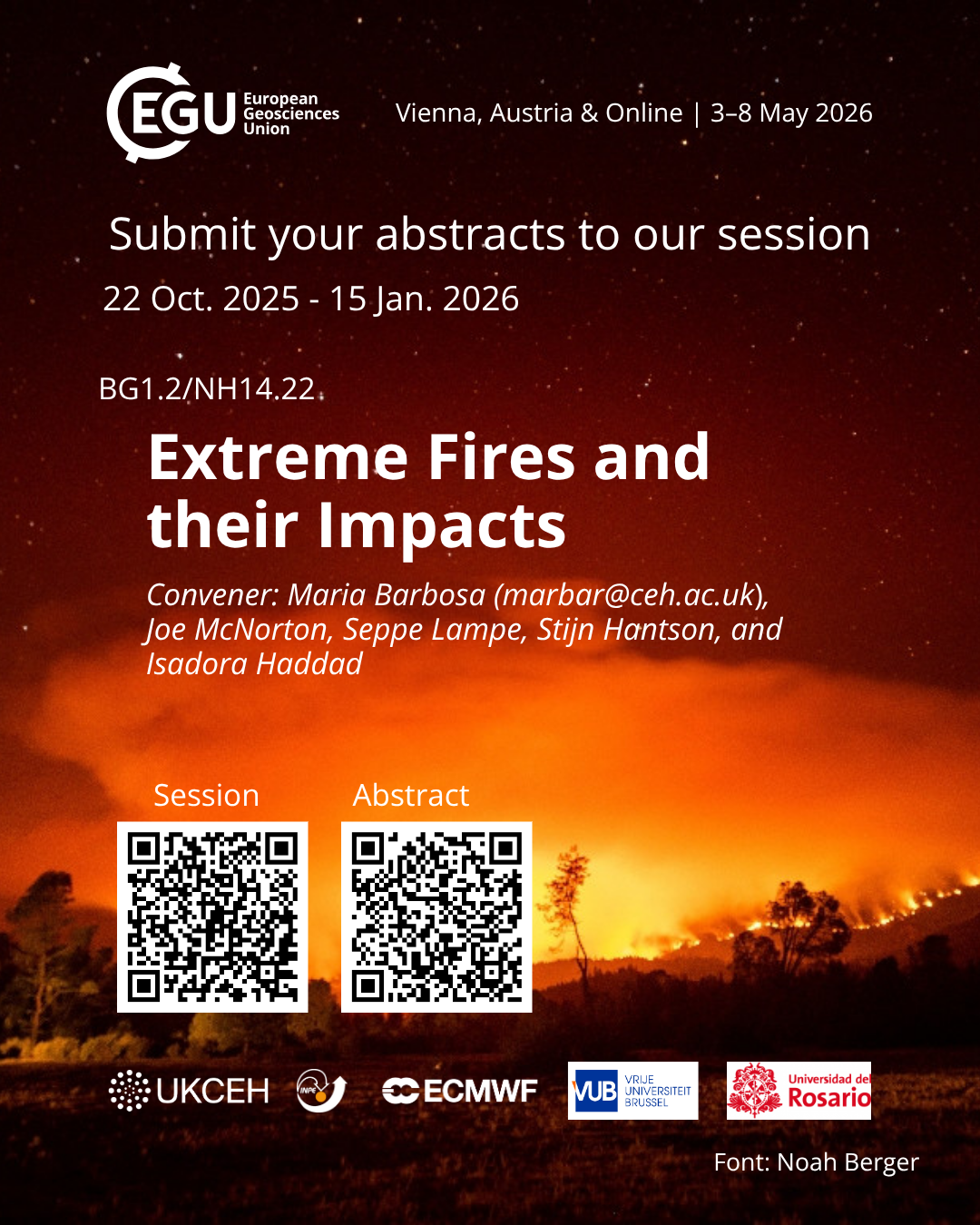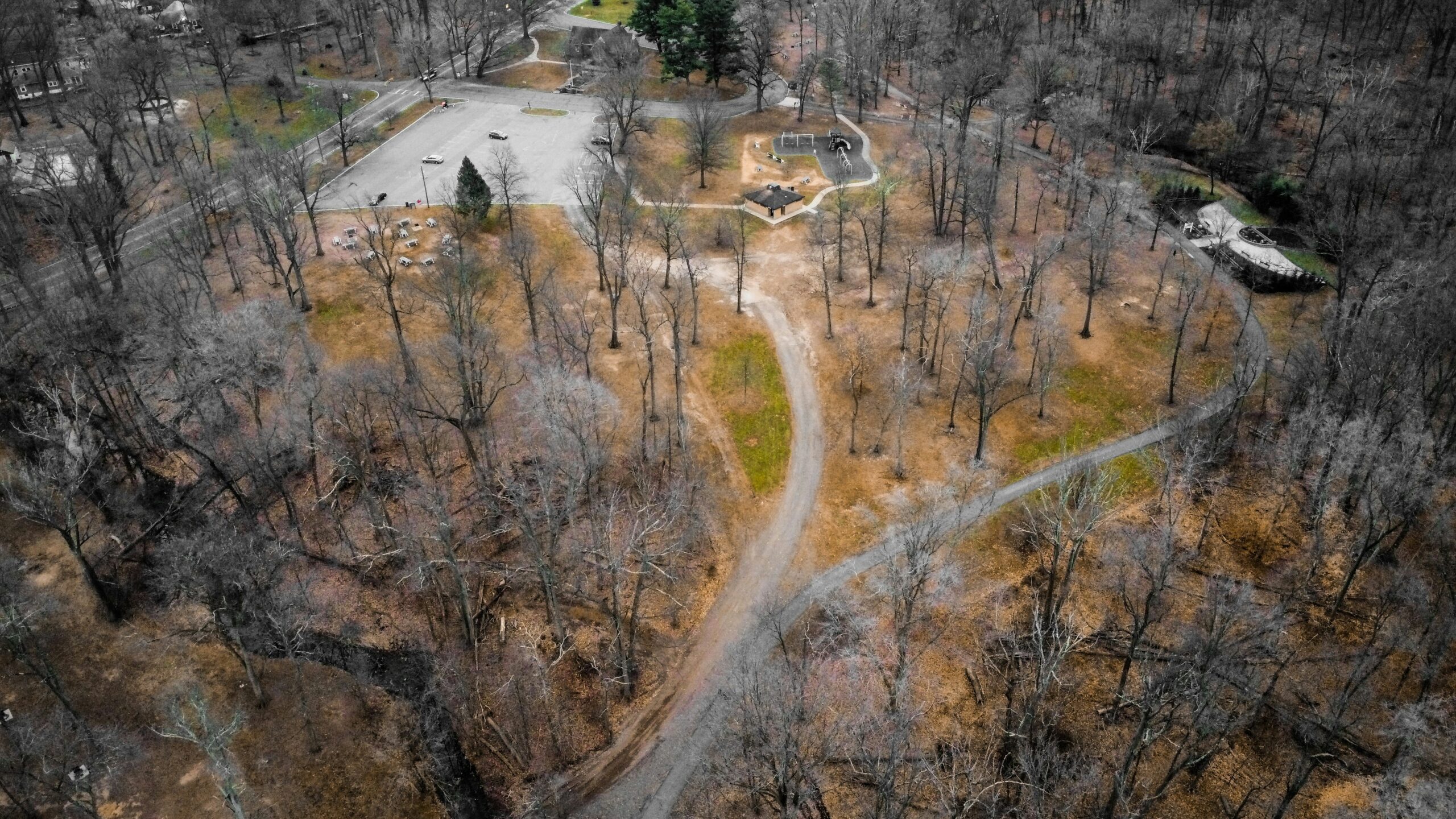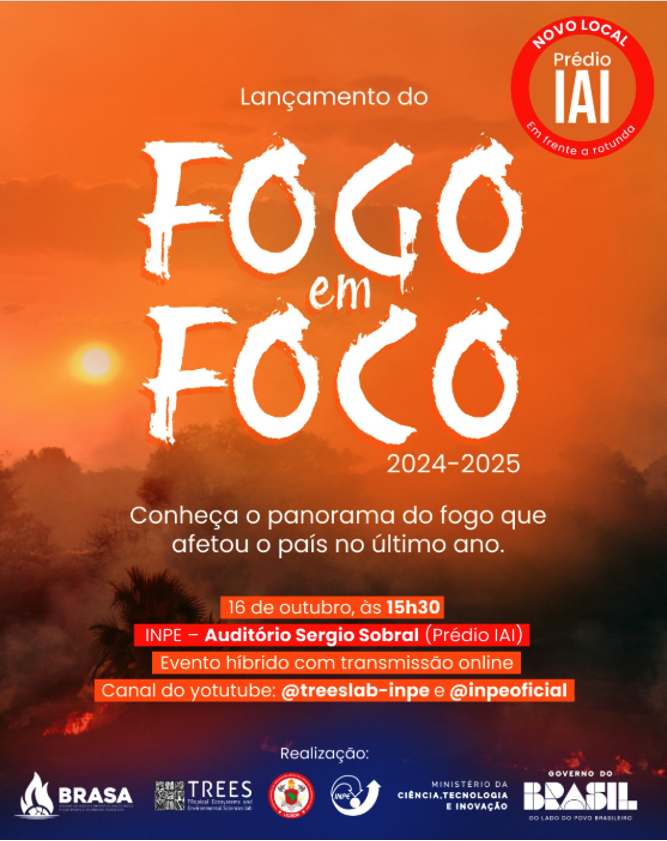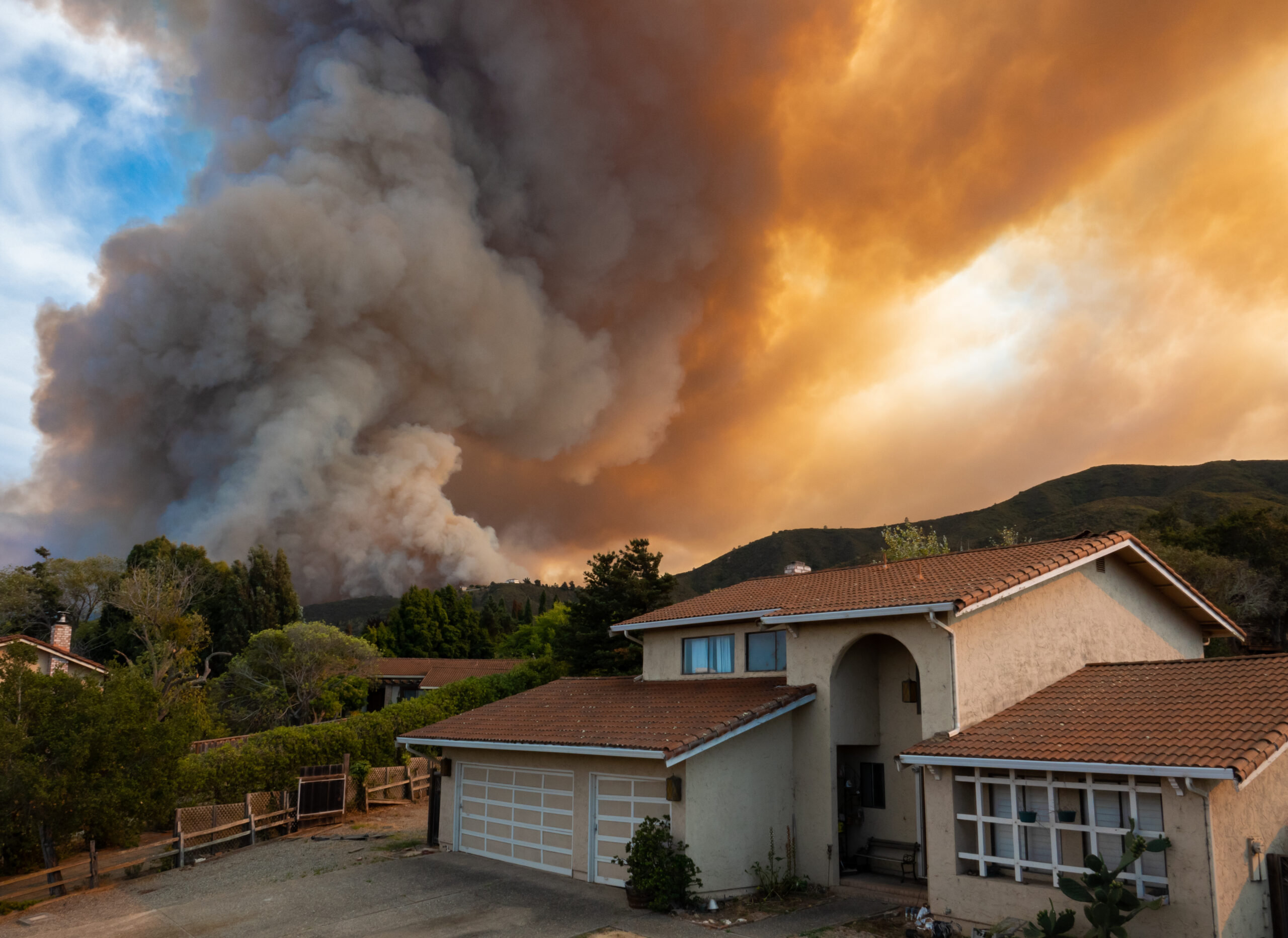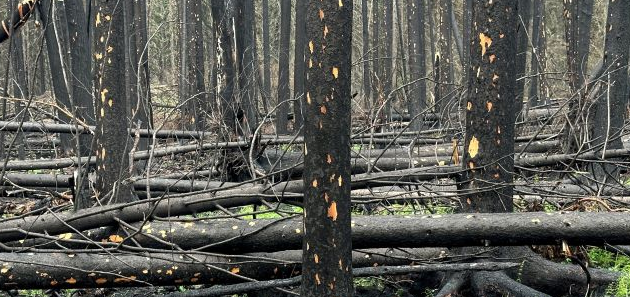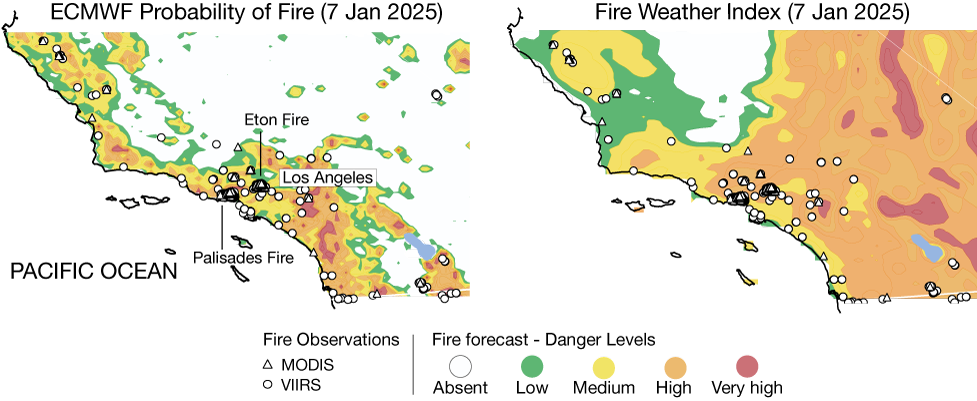
Unusually wet periods followed by intense drying, known as hydroclimatic rebounds, have become more frequent and intense in a warming climate. A new study, “Hydroclimatic Rebound Drives Extreme Fire in California’s Non-Forested Ecosystems” led by researchers at the European Centre for Medium-range Weather Forecasts (ECMWF) and the University of Murcia in Spain, demonstrates that these sharp swings in moisture increased the severity of the catastrophic Los Angeles wildfires in January 2025.
Published in Global Change Biology, the study reveals how wet periods fuel vegetation growth, creating an abundance of fuel that later dries into conditions conducive to extreme fires. In fuel-limited regions of California such as deserts and shrublands, these hydroclimatic oscillations can push ecosystems beyond critical fuel thresholds, creating conditions conducive to extreme fire. In contrast, forested mountain regions, where fuel is already abundant, show a stronger response to short-term (less than a year) drought conditions rather than long-term wetting and drying cycles.
These findings underline the importance, especially in sparsely vegetated areas, of considering hydroclimatic fluctuations when predicting fire danger.
“Our findings show that the history of rainfall and drying in an area can tell us a lot about fire danger well before wildfires occur,” says Joe McNorton – AI Scientist at ECMWF, lead author of the study. “By looking at these hydroclimatic rebounds, we can better anticipate extreme wildfires and provide more timely information for communities and fire managers.”
Indeed, using Machine Learning based operational fire prediction models, the team found that including year-specific fuel information alongside weather data significantly improved the predictions of the 2025 Los Angeles fires. The study demonstrates the practical value of accounting for hydroclimatic rebound effects as early indications of potential extreme wildfire behaviour. The inclusion of these long-term (more than a year) oscillations increased the forecast skill in shrubland ecosystems and could better inform management strategies.
As climate change drives more extreme and variable weather patterns, these findings underscore the need to consider both long-term fuel accumulation and short-term fire weather in wildfire management. By revealing the biome-specific dynamics of hydroclimatic influence on fire risk, the study offers new avenues to anticipate and mitigate extreme wildfire events in California and similar regions worldwide.
“Fuel accumulation is emerging as a critical factor in wildfire forecasting. In regions where vegetation is usually scarce, these build-ups can strongly influence both the probability of fire ignitions and also the severity of a fire once it ignites.” says Dr Francesca Di Giuseppe – Fire Forecast Coordinator at ECMWF, who contributed to the study. “Given the rising threat from extreme fire behaviour we have witnessed in 2025, methods to take into account fuel availability will deserve far more attention in the years ahead,” Di Giuseppe concludes.
